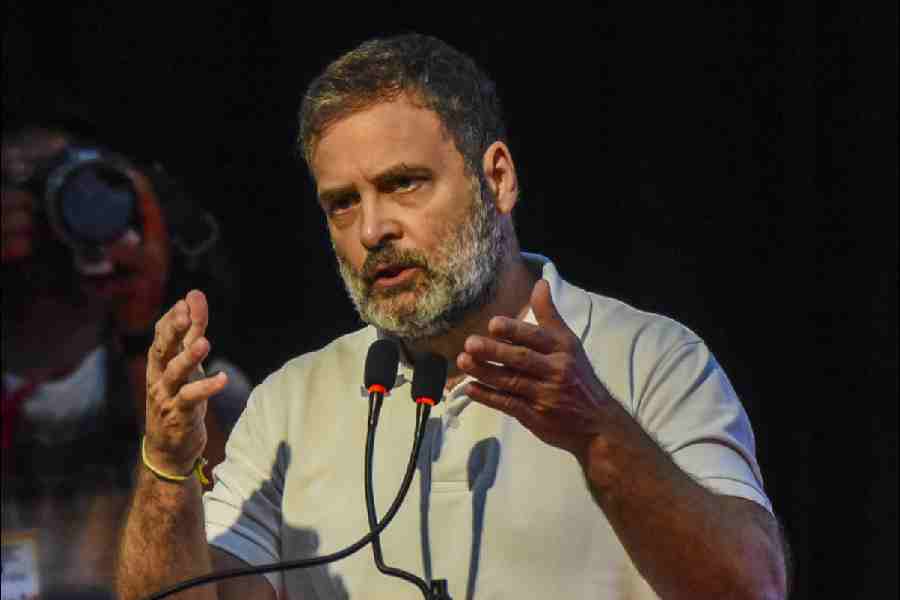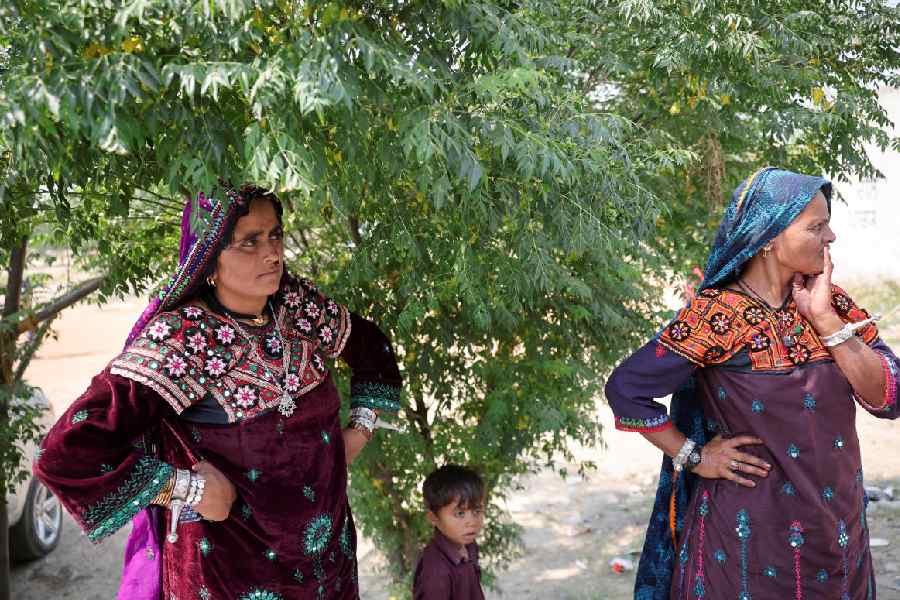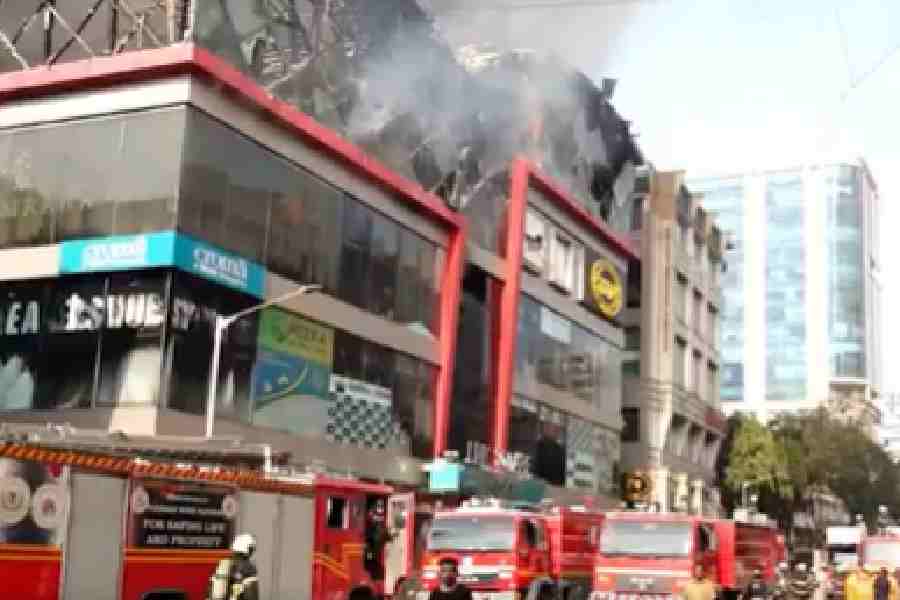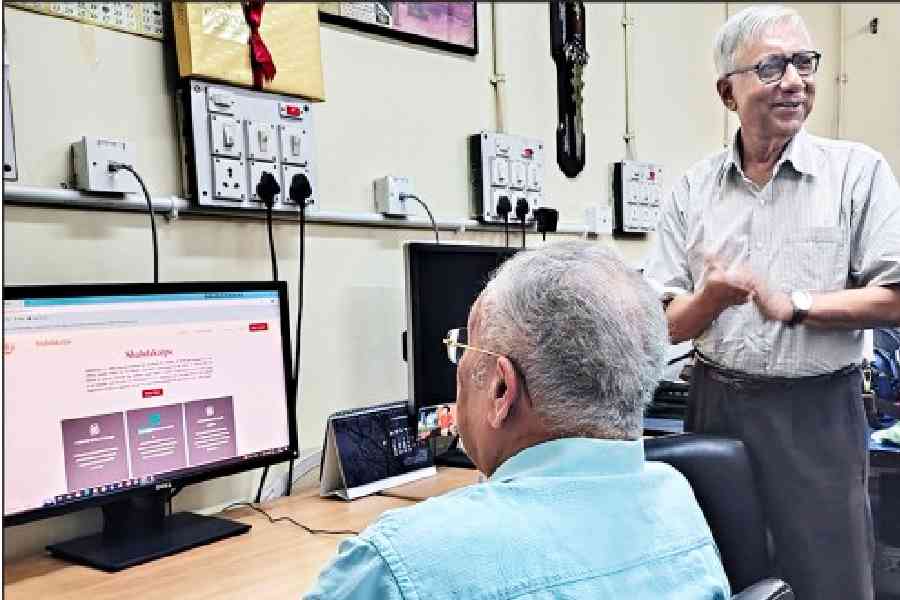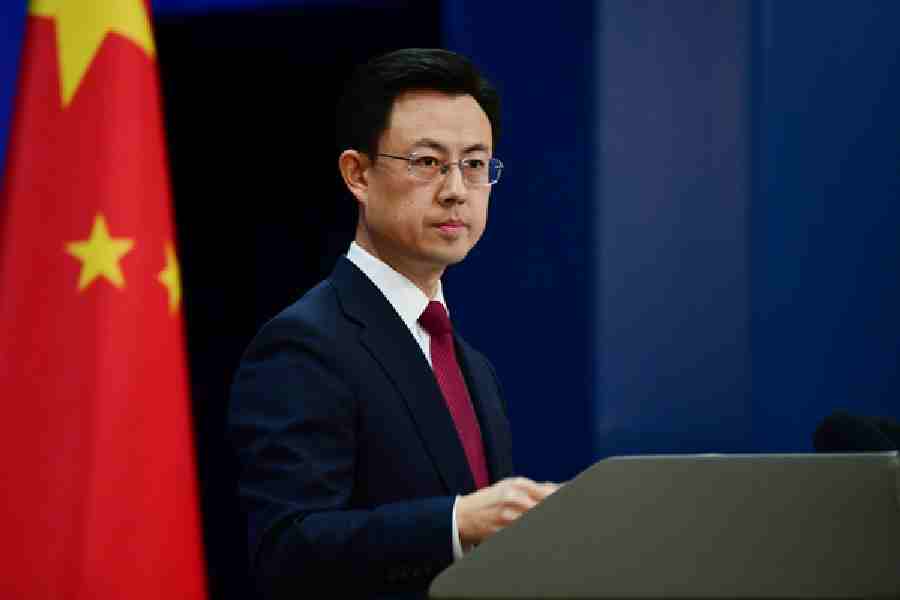Patna, Nov. 12: The automated teller machine, the life-changer whose all-weather dependence earned it the sobriquet Any Time Money, had a second successive bad day in office.
Across the country, few ATMs dispensed cash for the better part of Saturday and, when they did, the cash ran out fast. Just like it happened on Friday.
Long queues of people were seen at almost every ATM in Patna. Many of them had to leave, frustrated.
Bank officials said the rush would continue for at least three to four more days owing to a delay in replenishing currency notes.
Of State Bank of India's 2,096 ATMs in Bihar, only 506 were functioning till 4pm on Saturday. In Patna, against 328 ATMs of SBI, just 74 were operational.
Ajit Sood, the chief general manager of SBI (Bihar-Jharkhand), said: "Many ATMs have become functional since Friday. The delay in all
ATMs becoming fully functional is because of the time being taken to fill cash. The ATMs are configured to dispense only Rs 100 notes."
The letdown struck a jarring note at a time many citizens appeared willing to support the demonetisation decision if it helped combat black money, and to wait in queues with patience.
Hari Kishore Rai, a resident of Ashok Rajpath in Patna, said: "We are waiting in queues for withdrawing our hard earned money. Before introducing such a step, the government should have considered people's problems. The government should have extended the ATM withdrawal limit of Rs 2,000 in the larger interest of the people and ensured that machines are calibrated for the new notes."
The RBI yesterday urged the "public to exercise patience and exchange notes at convenience any time before December 30", assuring the customers "there is enough cash available in the banks".
However, the apex bank added: "It may take a while for the banks to recalibrate their ATMs."
The following information is based on conversations The Telegraph had with several officials in the money chain:
How does cash reach an ATM?
The RBI places orders for bank notes with two printers on the basis of an economic model that factors in real GDP growth rate, inflation and the denomination-wise disposal rate of soiled notes. Once printed, the notes are sent to the 19 issue offices, including one in Patna.
From the issue offices, the notes are sent to 4,075 RBI-designated currency chest branches of a group of banks. Bihar has some 135 designated currency chest branches, which supply the notes to smaller branches and ATMs.
How did demonetisation affect this hub-and-spoke operation?
The demonetisation, announced on Tuesday, caused a surge in the demand for Rs 100 notes from the chest branches, which used to keep a bigger stack of Rs 500 notes.
But some officials said that top RBI officers had advised the chest branches to collect the new Rs 2,000 notes instead of the Rs 100 notes. The new Rs 2,000 notes can currently be distributed only over the counter, not through ATMs, which can now only dispense Rs 100 and Rs 50 notes.
A delicate subject seems to be at the root of the stress on the over-the-counter distribution of Rs 2,000 notes. So far, customers have largely shown remarkable restraint and waited patiently in queues outside banks where they were depositing, exchanging and withdrawing notes.
The initial focus seemed solely on averting any flashpoint outside the banks where long queues were taking root and the risk of nerves fraying appeared high.
Bank officials assessed that the ATMs would not draw huge crowds as the customers would disperse as soon as they realised the machines were not working. They decided that the banks should not run dry at any cost and kept them stocked with the new Rs 2,000 notes - besides the Rs 100 notes, a source said.
Apprehensions linked to law and order are beginning to set in. The Centre has already advised cash vans to take extra precautions.
Then why not stock the ATMs also with Rs 2,000 notes? Isn't something better than nothing?
There's a catch. The new notes cannot simply be loaded into the ATMs. The configurations of the cassette (the tray that holds the cash) need to be changed. This is what the RBI meant by "recalibration".
The cassette needs to be recalibrated because the size of the Rs 2,000 note is different from that of the others. For instance, if the old Rs 500 note was 167mm long and 73mm wide, the new Rs 500 note is 150mm long and 66mm wide. Similarly, the old Rs 1,000 note was 177mm x 73mm while the new Rs 2,000 note is 166mm x 66mm. Recalibration requires technicians who have to open up each machine and make the change.
Ashok Shankar, solutions marketing and deployment manager at NCR India, one of the world's largest ATM makers, said the machines were universal and could dispense a wide variety of currencies like the Euro, the dollar and the rupee.
"Each ATM consists of either two or four cassettes, depending on the demand for currency where the machine is located. Now, a couple of changes are needed in the ATMs. The new notes are smaller and, therefore, the cassettes should be reconfigured," Shankar said. "Second, some back-end changes are required to facilitate the dispensing of Rs 2,000 notes. Work on both is happening as we speak. It will take some time to cover all the ATMs."
Why is cash running out so fast in the ATMs?
Pure math. Earlier, the ATMs could pack more value with fewer notes.
ATMs typically store notes valued at Rs 8-9 lakh in denominations of Rs 100, Rs 500 and Rs 1,000. Following the demonetisation, the RBI had instructed banks to fill only Rs 100 and Rs 50 notes initially. This means the number of notes per transaction is higher and the ATMs are running out of cash faster even with a limit of Rs 2,000 per card a day.
When will matters improve?
The RBI has said "it will take a while". Anand Bikram (assistant general manager), ATM operations, at SBI said: "Earlier, the ATMs were configured for the currency notes of Rs 100, Rs 500 and Rs 1,000 denominations. Now they will have to be reconfigured for Rs 2,000 and Rs 100. As of now the ATMs are being configured for Rs 100 notes. Once the Rs 100 notes are in adequate circulation, the ATMs will be configured for Rs 2,000 notes. It will take time."
A banker said: "Two days were given to recalibrate the ATMs but realistically, it will take much longer to fix the around 2 lakh ATMs in the country. There just aren't enough technicians."
Additional reporting by our Calcutta bureau


